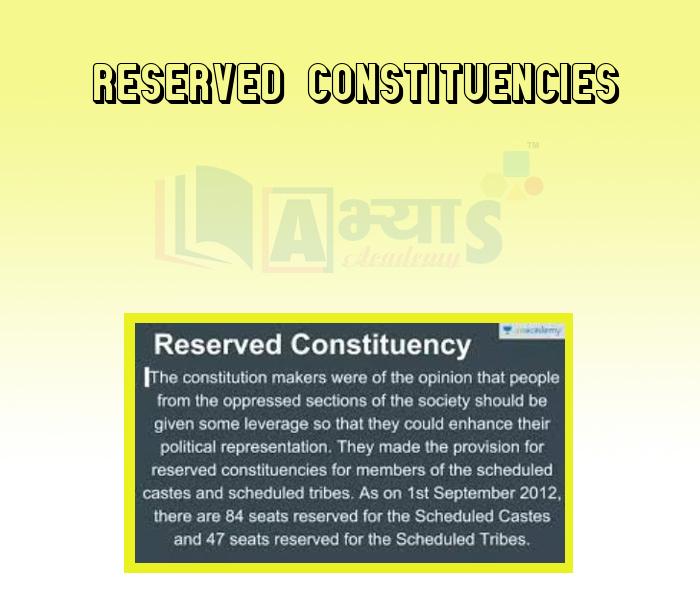Reserved Constituencies













Reserved Constituencies
Reserved Constituencies: The Constitution makers were worried that in an open electoral competition, certain weaker section may not stand a good chance to get elected to the Lok Sabha and the state Legislative Assemblies. If that happens, our Parliament and Assemblies would be deprived of the voice of a significant section of our population. That would make our democracy less representative and less democratic.
Reservation for SC and ST: The makers of our Constitution thought of a special system of reserved constituencies for the weaker sections. Some constituencies are reserved for people who belong to the Scheduled Castes (SC) and Scheduled Tribes (ST). In a SC reserved constituency, only someone who belongs to the Scheduled Castes can stand for election. Similarly, only those belonging to the Scheduled Tribes can contest an election from a constituency reserved for ST.
Reservation in Lok Sabha/ District/Local Level: A few seats in Lok Sabha are reserved for Scheduled Castes (SCs) and Scheduled Tribes (STs). This number is in proportion to their share in the total population. In the year 2012, 84 seats are reserved for the Scheduled Castes and 47 for the Scheduled Tribes (in Lok Sabha).
Thus, the reserved seats for SC and ST do not take away the legitimate share of any other social group. This system of reservation was extended later to other weaker sections at the district and local level. In many states, seats in rural (Panchayat) and urban (municipalities and corporations) local bodies are now reserved for Other Backward Classes (OBC) as well. However, the proportion of seats reserved varies from state to state. Similarly, one-third of the seats are reserved in rural and urban local bodies for women candidates.
Students / Parents Reviews [10]
A marvelous experience with Abhyas. I am glad to share that my ward has achieved more than enough at the Ambala ABHYAS centre. Years have passed on and more and more he has gained. May the centre flourish and develop day by day by the grace of God.

Archit Segal
7thAbhyas Methodology is very good. It is based on according to student and each child manages accordingly to its properly. Methodology has improved the abilities of students to shine them in future.

Manish Kumar
10thAbhyas is a complete education Institute. Here extreme care is taken by teacher with the help of regular exam. Extra classes also conducted by the institute, if the student is weak.

Om Umang
10thBeing a parent, I saw my daughter improvement in her studies by seeing a good result in all day to day compititive exam TMO, NSO, IEO etc and as well as studies. I have got a fruitful result from my daughter.

Prisha Gupta
8thMy experience with Abhyas is very good. I have learnt many things here like vedic maths and reasoning also. Teachers here first take our doubts and then there are assignments to verify our weak points.

Shivam Rana
7thMy experience was very good with Abhyas academy. I am studying here from 6th class and I am satisfied by its results in my life. I improved a lot here ahead of school syllabus.

Ayan Ghosh
8thOne of the best institutes to develope a child interest in studies.Provides SST and English knowledge also unlike other institutes. Teachers are co operative and friendly online tests andPPT develope practical knowledge also.

Aman Kumar Shrivastava
10thIt was good as the experience because as we had come here we had been improved in a such envirnment created here.Extra is taught which is beneficial for future.

Eshan Arora
8thAbout Abhyas metholodology the teachers are very nice and hardworking toward students.The Centre Head Mrs Anu Sethi is also a brilliant teacher.Abhyas has taught me how to overcome problems and has always taken my doubts and suppoeted me.

Shreya Shrivastava
8thI have spent a wonderful time in Abhyas academy. It has made my reasoning more apt, English more stronger and Maths an interesting subject for me. It has given me a habbit of self studying
